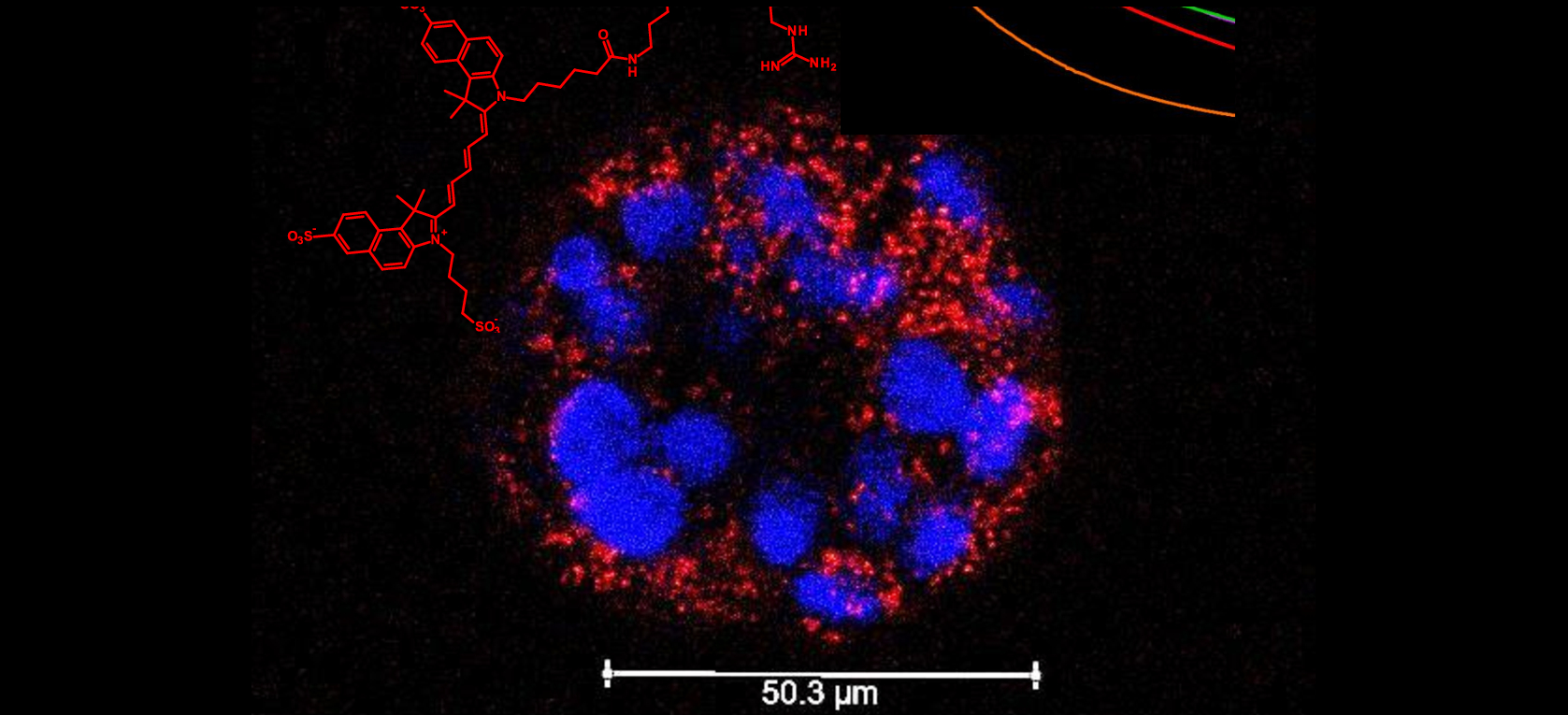Research
- RIT/
- Schmitthenner Molecular Imaging Lab/
- Research
Synthesizing targeted molecular imaging agents (TMIAs)

New synthetic approaches to targeted molecular imaging agents (TMIAs)
We are designing and synthesizing targeted imaging agents for fluorescence and photoacoustic imaging (dyes), MRI (chelated metals such as gadolinium), and PET (chelated metals such as Ga and Cu). A new modular method has been developed for the truly modular synthesis of agents that can be single modal or to combine two modules for mixing any combination of these in dual modal agents including two different dyes, two different metals, or mixing dyes with metals. A huge advantage of this method is that any targeting group can be added on in the last step, offering the use of a given imaging system for a variety of targeting systems.
Peptide-based modular method in detecting prostate cancer

New peptide-based modular method first applied to the synthesis of TMIAs for prostate cancer
A new modular method based on pre-constructed imaging modules that students call “imaging puzzle pieces” that are bonded to targeting modules in the last step of synthesis. These target biomarkers in diseased cells to concentrate and amplify the signal at the site of cancer. This was used to assemble a variety of TMIAs for FL, PAI, MRI and PET of prostate cancer.
Confocal fluorescence microscopy (CMF) to detect breast cancer

New targeted imaging agents for fluorescence guided surgery and photodynaimc therapy of breast cancer
In collaboration with Dr. Maureen Ferran (GSOLS at RIT) we are testing targeted agents for triple negative breast cancer cells utilizing confocal fluorescence microscopy (CFM). We have excellent preliminary data in confocal fluorescence microscopy (CMF) and have recently received a $ 25,000 grant from the Foundation for Women’s wellness for research in 2021 for extending this research to photodynamic therapy of breast cancer.